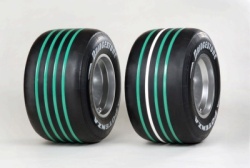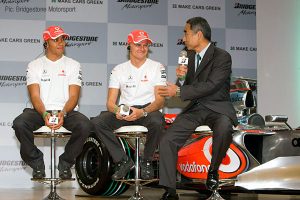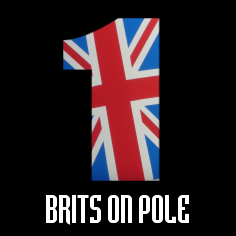Fresh from lighting up the Singaporean night in a blaze of electricity, the sport with the world’s heaviest carbon footprint is trying to convince everyday drivers to behave in a more environmentally-friendly fashion.
In the run-up to its home Grand Prix, Japanese tyre supplier Bridgestone is eagerly promoting the FIA’s ‘make cars green’ campaign, which aims to reduce the impact of cars on the environment by teaching drivers a different approach to motoring.

From race tyres with green stripes to the ubiquitous plastic wristbands, Bridgestone wants to use the publicity surrounding the Japanese Grand Prix as the launchpad for getting its ’10 points for greener motoring’ message out through local auto clubs to drivers around the world.
And as if that wasn’t enough, Lewis Hamilton has advised motorists to get on their bikes to reduce their environmental impact, saying he cycles around the roads where he lives, or takes public transport.
(We presume he means his new residence in Switzerland, as Brits on Pole is based near the ancestral Hamilton home of Stevenage and we’re sure we’d have noticed if in years gone by a 12-year-old on a Raleigh Chopper had cut us up on Six Hills Way.)

His comments came during a press conference involving Bridgestone head honchos Hiroshi Yasukawa and Hirohide Hamashima, along with the drivers from the two leading teams in the constructors’ championship, Hamilton and Heikki Kovalainen from McLaren and Ferrari’s Felipe Massa and Kimi Raikkonen.
After some chat about the season so far, the prospects for the Japanese Grand Prix, and the way the two teams use their tyres – “the Ferrari machine is very good with longer runs, but the McLaren is very fast in qualifying”, said tyre development director Hamashima – the talk turned to how ordinary drivers could reduce their environmental impact.
The top tips from the F1 experts all sounded a bit too scripted and neatly in line with Bridgestone’s list to be true, but there was plenty of good common sense in there for all that.
Here’s what they had to say:
- Felipe Massa
- Check your tyre pressures: “Sometimes you’re travelling around and you never go back home, and when you go back maybe your car is one month in the garage. So you always need to check your tyre pressure and make sure everything is right, and to have a safe trip for you and the car.”
- Kimi Raikkonen
- Carry less in your car: “I think an easy way is you don’t load up the car too much, you don’t put too many heavy things in the car, otherwise it’s not as effective any more and not as friendly for us or the environment.”
- Lewis Hamilton
- Plan your route with a GPS, use public transport or cycle: “I generally try to reduce the amount that I actually drive on the road, so I like to use some public transport where I live, because getting stuck in traffic and sitting there for hours doesn’t particularly make me happy. But always when I do drive I use GPS, so I try to plan my route. And of course as Felipe said we’re often away for so long that you have to check the tyre pressures, just for safety as well. I do a lot of cycling around my town, so reducing all that kind of helps, so you feel that you’re doing a good job for the environment.”
- Heikki Kovalainen
- Don’t run your engine unnecessarily: “I come from Finland – a very cold country – many people in the morning leave the car running for a long period to warm up the car. For myself I try not to leave the car running too long before I go out driving.”
And those 10 tips in full?
- Buy Green
- Plan your journey
- Check tyre pressures frequently
- Reduce loads and avoid the need for roof racks
- Don’t warm up your engine before starting off
- Use air conditioning only when necessary
- Accelerate gently and keep your speed constant
- Use engine braking
- Don’t idle your engine
- Offset your CO2 emissions
We say, the environment is and always will be the Achilles heel of motorsport. There is simply no way of avoiding this, and attempts to pretend otherwise can end up looking frankly ridiculous – as Honda found out when they introduced their ‘Earth Dreams’ branding. Nor is it quite as simple as adopting ethanol-based fuel, as American racing is moving towards, as the environmental debate over biofuels is still raging.

But for all that, and for all the inherent silliness of green-striped tyres on gas-guzzling F1 racers, there is much that is good in this FIA/Bridgestone campaign and it should be applauded for that.
Motorsport has long been the test-bed for ideas and technological advances that eventually make their way through the development process and into the cars we drive to go to work or do our shopping in. It is this that represents its best – if sometimes rather strained – line of defence.
So why not also take the direct route and talk straight to drivers?
Makes sense to us – but we’re still not wearing one of those wrist bands.
